Deck 25: The Urinary System
Question
Question
Question
Question
Question
Question
Question
Question
Question
Question
Question
Question
Question
Question
Question
Question
Question
Question
Question
Question
Question
Question
Question
Question
Question
Question
Question
Question
Question
Question
Question
Question
Question
Question
Question
Question
Question
Question
Question
Question
Question
Question
Question
Question
Question
Question
Question
Question
Question
Question
Question
Question
Question
Question
Question
Question
Question
Question
Question
Question
Question
Question
Question
Question
Question
Question
Question
Question
Question
Question
Question
Question
Question
Question
Question
Question
Question
Question
Question
Question

Unlock Deck
Sign up to unlock the cards in this deck!
Unlock Deck
Unlock Deck
1/116
Play
Full screen (f)
Deck 25: The Urinary System
1
The mechanism of water reabsorption by the renal tubules is .
A) osmosis
B) active transport
C) filtration
D) cotransport with sodium ions
A) osmosis
B) active transport
C) filtration
D) cotransport with sodium ions
A
2
If the Tm for a particular amino acid is 120 mg/100 ml and the concentration of that amino acid in the blood is 230 mg/100 ml, the amino acid will .
A) be completely reabsorbed by secondary active transport
B) be completely reabsorbed by the tubule cells
C) be actively secreted into the filtrate
D) appear in the urine
A) be completely reabsorbed by secondary active transport
B) be completely reabsorbed by the tubule cells
C) be actively secreted into the filtrate
D) appear in the urine
D
3
The fatty tissue surrounding the kidneys is important because it _.
A) ensures adequate energy for the adrenal glands to operate efficiently
B) is necessary as a barrier between the adrenal glands and kidneys
C) stabilizes the position of the kidneys by holding them in their normal position
D) produces vitamin D and other chemicals needed by the kidney
A) ensures adequate energy for the adrenal glands to operate efficiently
B) is necessary as a barrier between the adrenal glands and kidneys
C) stabilizes the position of the kidneys by holding them in their normal position
D) produces vitamin D and other chemicals needed by the kidney
C
4
Which of the following is not reabsorbed by the proximal convoluted tubule?
A) Na+
B) creatinine
C) K+
D) glucose
A) Na+
B) creatinine
C) K+
D) glucose

Unlock Deck
Unlock for access to all 116 flashcards in this deck.
Unlock Deck
k this deck
5
The glomerulus differs from other capillaries in the body in that it .
A) has a blood pressure much lower than other organ systems
B) is impermeable to most substances
C) is drained by an efferent arteriole
D) has a basement membrane
A) has a blood pressure much lower than other organ systems
B) is impermeable to most substances
C) is drained by an efferent arteriole
D) has a basement membrane

Unlock Deck
Unlock for access to all 116 flashcards in this deck.
Unlock Deck
k this deck
6
Which of the choices below are the most important hormone regulators of electrolyte reabsorption and secretion?
A) angiotensin II and ADH
B) angiotensin I and atrial natriuretic peptide
C) angiotensin II and aldosterone
D) angiotensin I and epinephrine
A) angiotensin II and ADH
B) angiotensin I and atrial natriuretic peptide
C) angiotensin II and aldosterone
D) angiotensin I and epinephrine

Unlock Deck
Unlock for access to all 116 flashcards in this deck.
Unlock Deck
k this deck
7
The artery lies on the boundary between the cortex and medulla of the kidney.
A) cortical radiate
B) interlobar
C) lobar
D) arcuate
A) cortical radiate
B) interlobar
C) lobar
D) arcuate

Unlock Deck
Unlock for access to all 116 flashcards in this deck.
Unlock Deck
k this deck
8
The descending limb of the nephron loop .
A) is freely permeable to sodium and urea
B) contains fluid that becomes more concentrated as it moves down into the medulla
C) pulls water by osmosis into the lumen of the tubule
D) is not permeable to water
A) is freely permeable to sodium and urea
B) contains fluid that becomes more concentrated as it moves down into the medulla
C) pulls water by osmosis into the lumen of the tubule
D) is not permeable to water

Unlock Deck
Unlock for access to all 116 flashcards in this deck.
Unlock Deck
k this deck
9
Which of the following is not true regarding tubular reabsorption?
A) It occurs via transcellular or paracellular routes.
B) It is a reclamation process.
C) It is a purely passive transport process.
D) It involves hormonal signals in the collecting ducts.
A) It occurs via transcellular or paracellular routes.
B) It is a reclamation process.
C) It is a purely passive transport process.
D) It involves hormonal signals in the collecting ducts.

Unlock Deck
Unlock for access to all 116 flashcards in this deck.
Unlock Deck
k this deck
10
An increase in the permeability of the cells of the collecting tubule to water is due to a(n) .
A) decrease in the production of ADH
B) decrease in the concentration of the blood plasma
C) increase in the production of aldosterone
D) increase in the production of ADH
A) decrease in the production of ADH
B) decrease in the concentration of the blood plasma
C) increase in the production of aldosterone
D) increase in the production of ADH

Unlock Deck
Unlock for access to all 116 flashcards in this deck.
Unlock Deck
k this deck
11
Alcohol acts as a diuretic because it .
A) inhibits the release of ADH
B) increases the rate of glomerular filtration
C) is not reabsorbed by the tubule cells
D) increases secretion of ADH
A) inhibits the release of ADH
B) increases the rate of glomerular filtration
C) is not reabsorbed by the tubule cells
D) increases secretion of ADH

Unlock Deck
Unlock for access to all 116 flashcards in this deck.
Unlock Deck
k this deck
12
Which of the following is the least important influence on reabsorption of a substance in the nephron?
A) number of carriers.
B) molecule size relative to fenestrations.
C) molecular complexity
D) lipid solubility.
A) number of carriers.
B) molecule size relative to fenestrations.
C) molecular complexity
D) lipid solubility.

Unlock Deck
Unlock for access to all 116 flashcards in this deck.
Unlock Deck
k this deck
13
Which cells of the kidney are chemoreceptors that respond to changes in solute content of the filtrate?
A) podocytes
B) juxtaglomerular cells
C) macula densa cells
D) mesangial cells
A) podocytes
B) juxtaglomerular cells
C) macula densa cells
D) mesangial cells

Unlock Deck
Unlock for access to all 116 flashcards in this deck.
Unlock Deck
k this deck
14
Place the following in correct sequence from the formation of a drop of urine to its elimination from the body.
1) major calyx
2) minor calyx
3) nephron
4) urethra
5) ureter
6) collecting duct
A) 6, 3, 2, 1, 5, 4
B) 3, 6, 2, 1, 5, 4
C) 3, 1, 2, 6, 5, 4
D) 2, 1, 3, 6, 5, 4
1) major calyx
2) minor calyx
3) nephron
4) urethra
5) ureter
6) collecting duct
A) 6, 3, 2, 1, 5, 4
B) 3, 6, 2, 1, 5, 4
C) 3, 1, 2, 6, 5, 4
D) 2, 1, 3, 6, 5, 4

Unlock Deck
Unlock for access to all 116 flashcards in this deck.
Unlock Deck
k this deck
15
Reabsorption of high levels of glucose and amino acids in the filtrate is accomplished by .
A) facilitated diffusion
B) secondary active transport
C) passive transport
D) countertransport
A) facilitated diffusion
B) secondary active transport
C) passive transport
D) countertransport

Unlock Deck
Unlock for access to all 116 flashcards in this deck.
Unlock Deck
k this deck
16
Which of the hormones below is responsible for facultative water reabsorption?
A) thyroxine
B) atrial natriuretic peptide
C) ADH
D) aldosterone
A) thyroxine
B) atrial natriuretic peptide
C) ADH
D) aldosterone

Unlock Deck
Unlock for access to all 116 flashcards in this deck.
Unlock Deck
k this deck
17
Which of the following acts as the trigger for the initiation of micturition (voiding)?
A) motor neurons
B) the pressure of the fluid in the bladder
C) the sympathetic efferents
D) the stretching of the bladder wall
A) motor neurons
B) the pressure of the fluid in the bladder
C) the sympathetic efferents
D) the stretching of the bladder wall

Unlock Deck
Unlock for access to all 116 flashcards in this deck.
Unlock Deck
k this deck
18
The functional and structural unit of the kidneys is the .
A) nephron
B) capsular space
C) glomerular capsule
D) nephron loop
A) nephron
B) capsular space
C) glomerular capsule
D) nephron loop

Unlock Deck
Unlock for access to all 116 flashcards in this deck.
Unlock Deck
k this deck
19
Which of the choices below is not a glomerular filtration rate control method?
A) neural regulation
B) renal autoregulation
C) electrolyte levels
D) hormonal regulation
A) neural regulation
B) renal autoregulation
C) electrolyte levels
D) hormonal regulation

Unlock Deck
Unlock for access to all 116 flashcards in this deck.
Unlock Deck
k this deck
20
If one says that the clearance value of glucose is zero, what does this mean?
A) The glucose molecule is too large to be filtered out of the blood.
B) The clearance value of glucose is relatively high in a healthy adult.
C) Most of the glucose is filtered out of the blood and is not reabsorbed in the convoluted tubules.
D) Normally all the glucose is reabsorbed.
A) The glucose molecule is too large to be filtered out of the blood.
B) The clearance value of glucose is relatively high in a healthy adult.
C) Most of the glucose is filtered out of the blood and is not reabsorbed in the convoluted tubules.
D) Normally all the glucose is reabsorbed.

Unlock Deck
Unlock for access to all 116 flashcards in this deck.
Unlock Deck
k this deck
21
The kidneys are stimulated to produce renin .
A) when the pH of the urine decreases
B) by a decrease in the blood pressure
C) when the specific gravity of urine rises above 1.10
D) when the peritubular capillaries are dilated
A) when the pH of the urine decreases
B) by a decrease in the blood pressure
C) when the specific gravity of urine rises above 1.10
D) when the peritubular capillaries are dilated

Unlock Deck
Unlock for access to all 116 flashcards in this deck.
Unlock Deck
k this deck
22
Which of the following does not describe the justaglomerular complex?
A) It regulates the rate of filtrate formation.
B) Its granular cells produce rennin.
C) It helps control systemic blood pressure.
D) Its macula densa cells produce aldosterone.
A) It regulates the rate of filtrate formation.
B) Its granular cells produce rennin.
C) It helps control systemic blood pressure.
D) Its macula densa cells produce aldosterone.

Unlock Deck
Unlock for access to all 116 flashcards in this deck.
Unlock Deck
k this deck
23
The urinary bladder is composed of epithelium.
A) simple squamous
B) stratified squamous
C) transitional
D) pseudostratified columnar
A) simple squamous
B) stratified squamous
C) transitional
D) pseudostratified columnar

Unlock Deck
Unlock for access to all 116 flashcards in this deck.
Unlock Deck
k this deck
24
The filtration membrane includes all except .
A) podocytes
B) renal fascia
C) basement membrane
D) glomerular endothelium
A) podocytes
B) renal fascia
C) basement membrane
D) glomerular endothelium

Unlock Deck
Unlock for access to all 116 flashcards in this deck.
Unlock Deck
k this deck
25
Which of the following is not a part of the juxtaglomerular complex?
A) macula densa
B) podocyte cells
C) mesangial cells
D) granular cells
A) macula densa
B) podocyte cells
C) mesangial cells
D) granular cells

Unlock Deck
Unlock for access to all 116 flashcards in this deck.
Unlock Deck
k this deck
26
Which of the following is not associated with the renal corpuscle?
A) an efferent arteriole
B) a vasa recta
C) a podocyte
D) a fenestrated capillary
A) an efferent arteriole
B) a vasa recta
C) a podocyte
D) a fenestrated capillary

Unlock Deck
Unlock for access to all 116 flashcards in this deck.
Unlock Deck
k this deck
27
A disease caused by inadequate secretion of antidiuretic hormone (ADH) by the pituitary gland with symptoms of polyuria is .
A) coma
B) diabetic acidosis
C) diabetes mellitus
D) diabetes insipidus
A) coma
B) diabetic acidosis
C) diabetes mellitus
D) diabetes insipidus

Unlock Deck
Unlock for access to all 116 flashcards in this deck.
Unlock Deck
k this deck
28
Which of the choices below is a function of the nephron loop?
A) form a large volume of very dilute urine or a small volume of very concentrated urine
B) absorb electrolytes actively and water by osmosis in the same segments
C) absorb water and electrolytes into the tubular network
D) form a large volume of very concentrated urine or a small volume of very dilute urine
A) form a large volume of very dilute urine or a small volume of very concentrated urine
B) absorb electrolytes actively and water by osmosis in the same segments
C) absorb water and electrolytes into the tubular network
D) form a large volume of very concentrated urine or a small volume of very dilute urine

Unlock Deck
Unlock for access to all 116 flashcards in this deck.
Unlock Deck
k this deck
29
Select the correct statement about the nephrons.
A) The glomerulus is correctly described as the proximal end of the proximal convoluted tubule.
B) Podocytes are the branching epithelial cells that line the tubules of the nephron.
C) Filtration slits are the pores that give fenestrated capillaries their name.
D) The parietal layer of the glomerular capsule is simple squamous epithelium.
A) The glomerulus is correctly described as the proximal end of the proximal convoluted tubule.
B) Podocytes are the branching epithelial cells that line the tubules of the nephron.
C) Filtration slits are the pores that give fenestrated capillaries their name.
D) The parietal layer of the glomerular capsule is simple squamous epithelium.

Unlock Deck
Unlock for access to all 116 flashcards in this deck.
Unlock Deck
k this deck
30
The chief force pushing water and solutes out of the blood across the filtration membrane is
)
A) protein- regulated diffusion
B) glomerular hydrostatic pressure (glomerular blood pressure)
C) the size of the pores in the basement membrane of the capillaries
D) the ionic electrochemical gradient
)
A) protein- regulated diffusion
B) glomerular hydrostatic pressure (glomerular blood pressure)
C) the size of the pores in the basement membrane of the capillaries
D) the ionic electrochemical gradient

Unlock Deck
Unlock for access to all 116 flashcards in this deck.
Unlock Deck
k this deck
31
Which of the choices below is the salt level- monitoring part of the nephron?
A) vasa recta
B) principal cell
C) macula densa
D) nephron loop
A) vasa recta
B) principal cell
C) macula densa
D) nephron loop

Unlock Deck
Unlock for access to all 116 flashcards in this deck.
Unlock Deck
k this deck
32
The function of angiotensin II is to .
A) constrict arterioles and increase blood pressure
B) decrease water absorption
C) decrease the production of aldosterone
D) decrease arterial blood pressure
A) constrict arterioles and increase blood pressure
B) decrease water absorption
C) decrease the production of aldosterone
D) decrease arterial blood pressure

Unlock Deck
Unlock for access to all 116 flashcards in this deck.
Unlock Deck
k this deck
33
The macula densa cells respond to _.
A) aldosterone
B) antidiuretic hormone
C) changes in solute content of the filtrate
D) changes in pressure in the tubule
A) aldosterone
B) antidiuretic hormone
C) changes in solute content of the filtrate
D) changes in pressure in the tubule

Unlock Deck
Unlock for access to all 116 flashcards in this deck.
Unlock Deck
k this deck
34
Select the correct statement about urinary system development.
A) Kidneys develop from urogenital ridges.
B) The pronephros (first tubule system) develops during the tenth week of gestation.
C) The metanephric ducts will become the urethras.
D) The mesonephros will develop into the kidneys.
A) Kidneys develop from urogenital ridges.
B) The pronephros (first tubule system) develops during the tenth week of gestation.
C) The metanephric ducts will become the urethras.
D) The mesonephros will develop into the kidneys.

Unlock Deck
Unlock for access to all 116 flashcards in this deck.
Unlock Deck
k this deck
35
In the ascending limb of the nephron loop the .
A) thin segment is not permeable to sodium and chloride
B) thick segment is permeable to water
C) thick segment moves ions out into interstitial spaces for reabsorption
D) thin segment is freely permeable to water
A) thin segment is not permeable to sodium and chloride
B) thick segment is permeable to water
C) thick segment moves ions out into interstitial spaces for reabsorption
D) thin segment is freely permeable to water

Unlock Deck
Unlock for access to all 116 flashcards in this deck.
Unlock Deck
k this deck
36
Select the correct statement about the ureters.
A) The ureters are capable of peristalsis like that of the gastrointestinal tract.
B) The epithelium is stratified squamous like the skin, which allows a great deal of stretch.
C) Ureters contain sphincters at the entrance to the bladder to prevent the backflow of urine.
D) The ureter is innervated by parasympathetic nerve endings only.
A) The ureters are capable of peristalsis like that of the gastrointestinal tract.
B) The epithelium is stratified squamous like the skin, which allows a great deal of stretch.
C) Ureters contain sphincters at the entrance to the bladder to prevent the backflow of urine.
D) The ureter is innervated by parasympathetic nerve endings only.

Unlock Deck
Unlock for access to all 116 flashcards in this deck.
Unlock Deck
k this deck
37
Which of the following is the correct sequence of kidney development from embryo to fetus?
A) pronephros, metanephros, mesonephros
B) mesonephros, metanephros, pronephros
C) mesonephros, pronephros, metanephros
D) pronephros, mesonephros, metanephros
A) pronephros, metanephros, mesonephros
B) mesonephros, metanephros, pronephros
C) mesonephros, pronephros, metanephros
D) pronephros, mesonephros, metanephros

Unlock Deck
Unlock for access to all 116 flashcards in this deck.
Unlock Deck
k this deck
38
Excretion of dilute urine requires .
A) the presence of ADH
B) impermeability of the collecting tubule to water
C) relative permeability of the distal tubule to water
D) transport of sodium and chloride ions out of the descending nephron loop
A) the presence of ADH
B) impermeability of the collecting tubule to water
C) relative permeability of the distal tubule to water
D) transport of sodium and chloride ions out of the descending nephron loop

Unlock Deck
Unlock for access to all 116 flashcards in this deck.
Unlock Deck
k this deck
39
The mechanism that establishes the medullary osmotic gradient depends most on the permeability properties of the .
A) distal convoluted tubule
B) nephron loop
C) collecting duct
D) glomerular filtration membrane
A) distal convoluted tubule
B) nephron loop
C) collecting duct
D) glomerular filtration membrane

Unlock Deck
Unlock for access to all 116 flashcards in this deck.
Unlock Deck
k this deck
40
Which of the choices below is not a method by which the cells of the renal tubules can raise blood pH?
A) by reabsorbing filtered bicarbonate ions
B) by producing new bicarbonate ions
C) by secreting hydrogen ions into the filtrate
D) by secreting sodium ions
A) by reabsorbing filtered bicarbonate ions
B) by producing new bicarbonate ions
C) by secreting hydrogen ions into the filtrate
D) by secreting sodium ions

Unlock Deck
Unlock for access to all 116 flashcards in this deck.
Unlock Deck
k this deck
41
The presence of pus in the urine is a condition called .

Unlock Deck
Unlock for access to all 116 flashcards in this deck.
Unlock Deck
k this deck
42
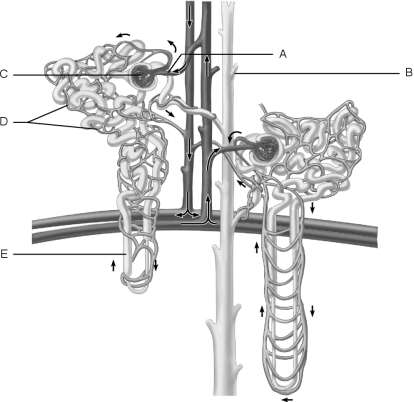 Figure 25.1Using Figure 25.1, match the following:
Figure 25.1Using Figure 25.1, match the following:Glomerulus.

Unlock Deck
Unlock for access to all 116 flashcards in this deck.
Unlock Deck
k this deck
43
Which of the choices below is the least important role of tubular secretion?
A) disposing of substances not already in the filtrate, such as certain drugs
B) ridding the body of excessive potassium ions
C) eliminating undesirable substances such as urea and uric acid that have been reabsorbed by passive processes
D) ridding the body of bicarbonate ions
A) disposing of substances not already in the filtrate, such as certain drugs
B) ridding the body of excessive potassium ions
C) eliminating undesirable substances such as urea and uric acid that have been reabsorbed by passive processes
D) ridding the body of bicarbonate ions

Unlock Deck
Unlock for access to all 116 flashcards in this deck.
Unlock Deck
k this deck
44
The fluid in the glomerular (Bowman's) capsule is similar to plasma except that it does not contain a significant amount of .
A) electrolytes
B) plasma protein
C) glucose
D) hormones
A) electrolytes
B) plasma protein
C) glucose
D) hormones

Unlock Deck
Unlock for access to all 116 flashcards in this deck.
Unlock Deck
k this deck
45
An important characteristic of urine is its specific gravity or density, which is .
A) much higher than water
B) less than water
C) slightly higher than water
D) the same as water
A) much higher than water
B) less than water
C) slightly higher than water
D) the same as water

Unlock Deck
Unlock for access to all 116 flashcards in this deck.
Unlock Deck
k this deck
46
Most electrolyte reabsorption by the renal tubules is _.
A) accomplished after the nephron loop is reached
B) hormonally controlled in distal tubule segments
C) in the distal convoluted tubule
D) not limited by a transport maximum
A) accomplished after the nephron loop is reached
B) hormonally controlled in distal tubule segments
C) in the distal convoluted tubule
D) not limited by a transport maximum

Unlock Deck
Unlock for access to all 116 flashcards in this deck.
Unlock Deck
k this deck
47
Which of the following best describes kidney function in older adults (70 years or older)?
A) Kidney function decreases due to kidney atrophy.
B) Only obese and diabetic older adults have any kidney dysfunction.
C) Kidney function remains the same throughout life, regardless of age.
D) Only about 3% of older adults have any loss of kidney function.
A) Kidney function decreases due to kidney atrophy.
B) Only obese and diabetic older adults have any kidney dysfunction.
C) Kidney function remains the same throughout life, regardless of age.
D) Only about 3% of older adults have any loss of kidney function.

Unlock Deck
Unlock for access to all 116 flashcards in this deck.
Unlock Deck
k this deck
48
The renal corpuscle is made up of _ .
A) the descending nephron loop
B) the renal papilla
C) Bowman's capsule and glomerulus
D) the renal pyramid
A) the descending nephron loop
B) the renal papilla
C) Bowman's capsule and glomerulus
D) the renal pyramid

Unlock Deck
Unlock for access to all 116 flashcards in this deck.
Unlock Deck
k this deck
49
 Figure 25.2Using Figure 25.2, match the following:
Figure 25.2Using Figure 25.2, match the following:Collecting duct cells.

Unlock Deck
Unlock for access to all 116 flashcards in this deck.
Unlock Deck
k this deck
50
 Figure 25.1Using Figure 25.1, match the following:
Figure 25.1Using Figure 25.1, match the following:The need to get up in the middle of the night to urinate is called _.

Unlock Deck
Unlock for access to all 116 flashcards in this deck.
Unlock Deck
k this deck
51
What is the most direct function of the juxtaglomerular apparatus?
A) help regulate blood pressure and the rate of excretion by the kidneys
B) help regulate urea absorption by the kidneys
C) help regulate blood pressure and the rate of blood filtration by the kidneys
D) help regulate water and electrolyte excretion by the kidneys
A) help regulate blood pressure and the rate of excretion by the kidneys
B) help regulate urea absorption by the kidneys
C) help regulate blood pressure and the rate of blood filtration by the kidneys
D) help regulate water and electrolyte excretion by the kidneys

Unlock Deck
Unlock for access to all 116 flashcards in this deck.
Unlock Deck
k this deck
52
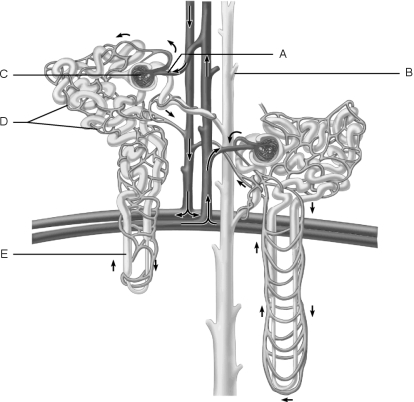 Figure 25.1Using Figure 25.1, match the following:
Figure 25.1Using Figure 25.1, match the following:Afferent arteriole.

Unlock Deck
Unlock for access to all 116 flashcards in this deck.
Unlock Deck
k this deck
53
What are aquaporins?

Unlock Deck
Unlock for access to all 116 flashcards in this deck.
Unlock Deck
k this deck
54
Which of the choices below is not a function of the urinary system?
A) regulates blood glucose levels and produces hormones
B) maintains blood osmolarity
C) eliminates solid, undigested wastes and excretes carbon dioxide, water, salts, and heat
D) helps maintain homeostasis by controlling the composition, volume, and pressure of blood
A) regulates blood glucose levels and produces hormones
B) maintains blood osmolarity
C) eliminates solid, undigested wastes and excretes carbon dioxide, water, salts, and heat
D) helps maintain homeostasis by controlling the composition, volume, and pressure of blood

Unlock Deck
Unlock for access to all 116 flashcards in this deck.
Unlock Deck
k this deck
55
What would happen if the capsular hydrostatic pressure were increased above normal?
A) Net filtration would decrease.
B) Capsular osmotic pressure would compensate so that filtration would not change.
C) Filtration would increase in proportion to the increase in capsular pressure.
D) Net filtration would increase above normal.
A) Net filtration would decrease.
B) Capsular osmotic pressure would compensate so that filtration would not change.
C) Filtration would increase in proportion to the increase in capsular pressure.
D) Net filtration would increase above normal.

Unlock Deck
Unlock for access to all 116 flashcards in this deck.
Unlock Deck
k this deck
56
Humans can survive for a period of time without water thanks to the ability of the kidneys to produce concentrated urine. Briefly explain the factors that allow this to happen.

Unlock Deck
Unlock for access to all 116 flashcards in this deck.
Unlock Deck
k this deck
57
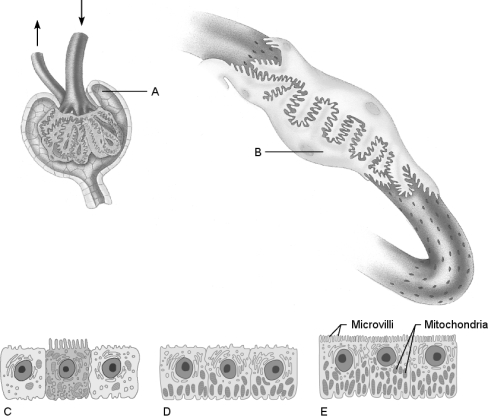 Figure 25.2Using Figure 25.2, match the following:
Figure 25.2Using Figure 25.2, match the following:Freshly voided urine has very little smell, but shortly after voiding it can give off a very strong smell. Why?

Unlock Deck
Unlock for access to all 116 flashcards in this deck.
Unlock Deck
k this deck
58
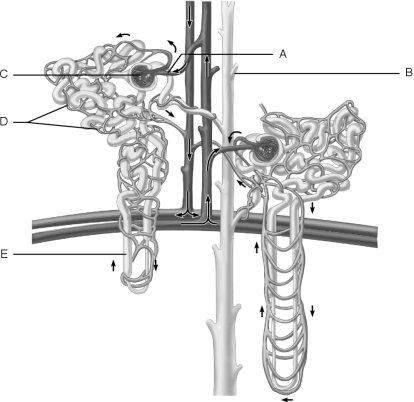 Figure 25.1Using Figure 25.1, match the following:
Figure 25.1Using Figure 25.1, match the following:Collecting duct.

Unlock Deck
Unlock for access to all 116 flashcards in this deck.
Unlock Deck
k this deck
59
 Figure 25.2Using Figure 25.2, match the following:
Figure 25.2Using Figure 25.2, match the following:Cells that reabsorb virtually all the nutrients.

Unlock Deck
Unlock for access to all 116 flashcards in this deck.
Unlock Deck
k this deck
60
The factor favoring filtrate formation at the glomerulus is the .
A) colloid osmotic pressure of the blood
B) capsular hydrostatic pressure
C) myogenic mechanism
D) glomerular hydrostatic pressure
A) colloid osmotic pressure of the blood
B) capsular hydrostatic pressure
C) myogenic mechanism
D) glomerular hydrostatic pressure

Unlock Deck
Unlock for access to all 116 flashcards in this deck.
Unlock Deck
k this deck
61
Explain the role of aldosterone in sodium and water balance.

Unlock Deck
Unlock for access to all 116 flashcards in this deck.
Unlock Deck
k this deck
62
 Figure 25.2Using Figure 25.2, match the following:
Figure 25.2Using Figure 25.2, match the following:Podocyte.

Unlock Deck
Unlock for access to all 116 flashcards in this deck.
Unlock Deck
k this deck
63
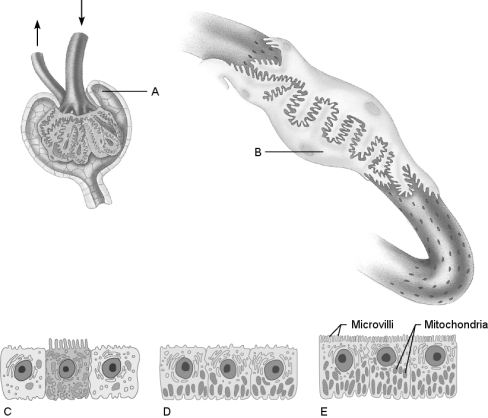 Figure 25.2Using Figure 25.2, match the following:
Figure 25.2Using Figure 25.2, match the following:Cells that are most affected by ADH.

Unlock Deck
Unlock for access to all 116 flashcards in this deck.
Unlock Deck
k this deck
64
 Figure 25.2Using Figure 25.2, match the following:
Figure 25.2Using Figure 25.2, match the following:Filtrate at the site of these cells is about the same osmolarity as blood plasma.

Unlock Deck
Unlock for access to all 116 flashcards in this deck.
Unlock Deck
k this deck
65
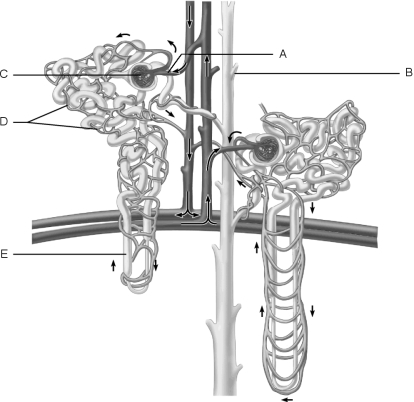 Figure 25.1Using Figure 25.1, match the following:
Figure 25.1Using Figure 25.1, match the following:Peritubular capillaries.

Unlock Deck
Unlock for access to all 116 flashcards in this deck.
Unlock Deck
k this deck
66
List three substances that are abnormal urinary constituents and provide the proper clinical term for such abnormalities.

Unlock Deck
Unlock for access to all 116 flashcards in this deck.
Unlock Deck
k this deck
67
 Figure 25.2Using Figure 25.2, match the following:
Figure 25.2Using Figure 25.2, match the following:Cells that are the most active in reabsorbing the filtrate.

Unlock Deck
Unlock for access to all 116 flashcards in this deck.
Unlock Deck
k this deck
68
 Figure 25.2Using Figure 25.2, match the following:
Figure 25.2Using Figure 25.2, match the following:Is composed of simple squamous epithelium.

Unlock Deck
Unlock for access to all 116 flashcards in this deck.
Unlock Deck
k this deck
69
Sodium- linked water flow across a membrane not under hormonal control is called
water reabsorption.
water reabsorption.

Unlock Deck
Unlock for access to all 116 flashcards in this deck.
Unlock Deck
k this deck
70
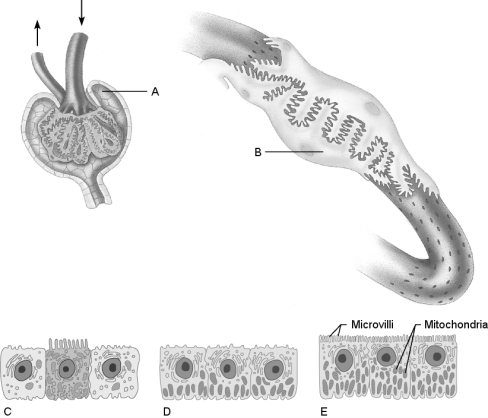 Figure 25.2Using Figure 25.2, match the following:
Figure 25.2Using Figure 25.2, match the following:Almost no water is absorbed in these cells.

Unlock Deck
Unlock for access to all 116 flashcards in this deck.
Unlock Deck
k this deck
71
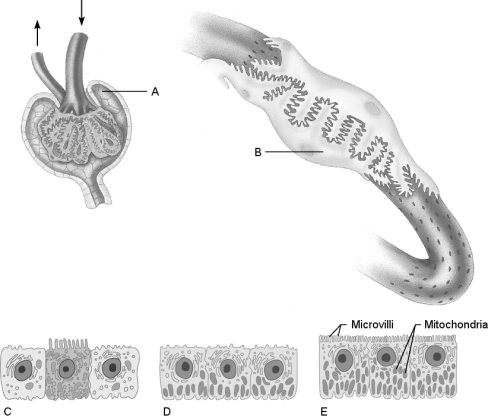 Figure 25.2Using Figure 25.2, match the following:
Figure 25.2Using Figure 25.2, match the following:Proximal convoluted tubule cells.

Unlock Deck
Unlock for access to all 116 flashcards in this deck.
Unlock Deck
k this deck
72
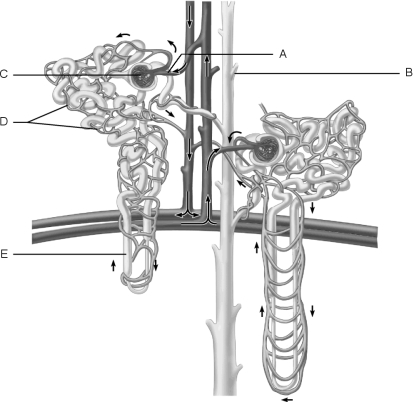 Figure 25.1Using Figure 25.1, match the following:
Figure 25.1Using Figure 25.1, match the following:Structure most closely associated with granular cells.

Unlock Deck
Unlock for access to all 116 flashcards in this deck.
Unlock Deck
k this deck
73
 Figure 25.2Using Figure 25.2, match the following:
Figure 25.2Using Figure 25.2, match the following:The mechanism is the general tendency of vascular smooth muscle to contract when stretched.

Unlock Deck
Unlock for access to all 116 flashcards in this deck.
Unlock Deck
k this deck
74
 Figure 25.1Using Figure 25.1, match the following:
Figure 25.1Using Figure 25.1, match the following:Medulla of the kidney.

Unlock Deck
Unlock for access to all 116 flashcards in this deck.
Unlock Deck
k this deck
75
 Figure 25.1Using Figure 25.1, match the following:
Figure 25.1Using Figure 25.1, match the following:Nephron loop.

Unlock Deck
Unlock for access to all 116 flashcards in this deck.
Unlock Deck
k this deck
76
 Figure 25.2Using Figure 25.2, match the following:
Figure 25.2Using Figure 25.2, match the following:Explain how filtration works in the glomerular capillaries.

Unlock Deck
Unlock for access to all 116 flashcards in this deck.
Unlock Deck
k this deck
77
List and describe three pressures operating at the filtration membrane, and explain how each influences net filtration pressure.

Unlock Deck
Unlock for access to all 116 flashcards in this deck.
Unlock Deck
k this deck
78
Explain what is meant by the terms cotransport process and transport maximum.

Unlock Deck
Unlock for access to all 116 flashcards in this deck.
Unlock Deck
k this deck
79
ADH activated water channels called _ are essential for water reabsorption in the collecting duct.

Unlock Deck
Unlock for access to all 116 flashcards in this deck.
Unlock Deck
k this deck
80
 Figure 25.1Using Figure 25.1, match the following:
Figure 25.1Using Figure 25.1, match the following:The area between the ureters and urethra is called the in a bladder.

Unlock Deck
Unlock for access to all 116 flashcards in this deck.
Unlock Deck
k this deck



